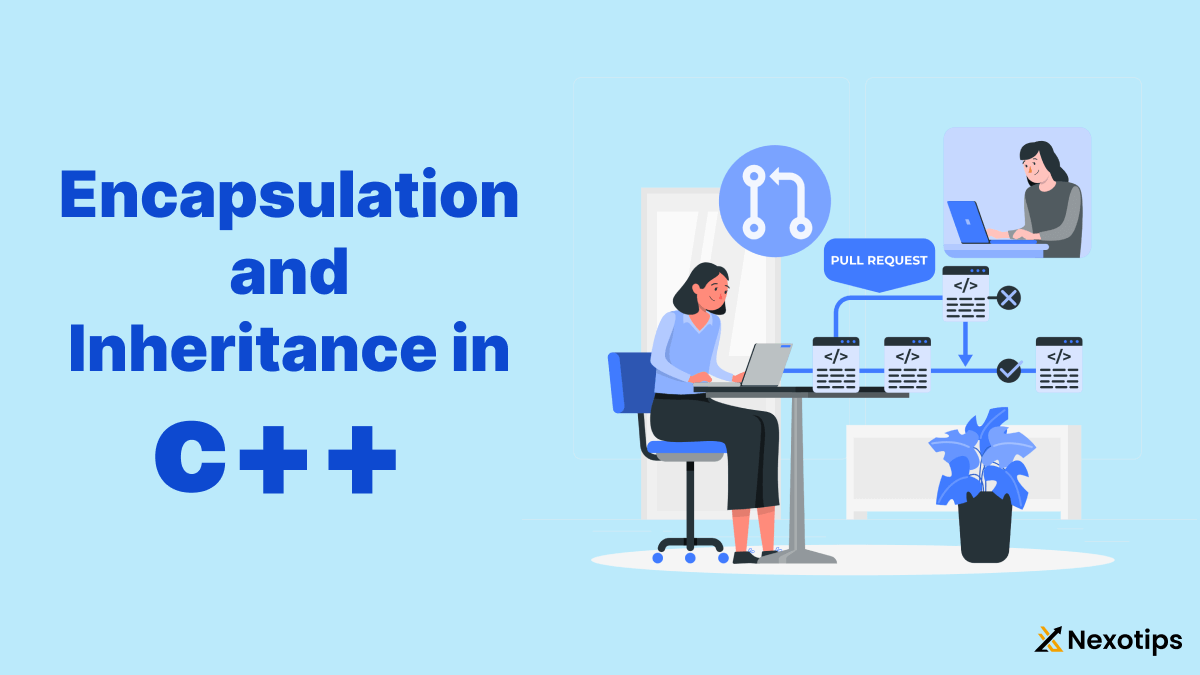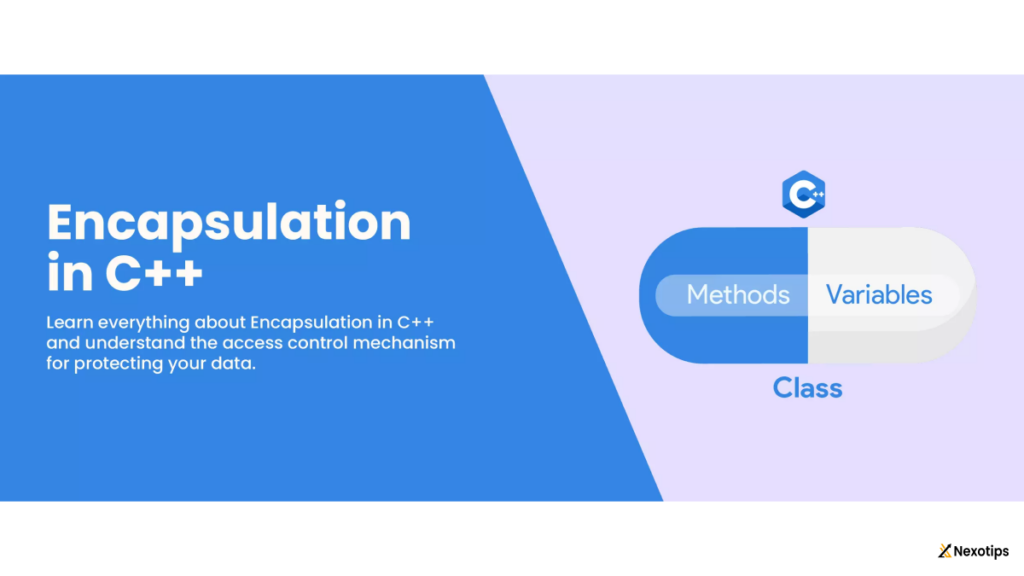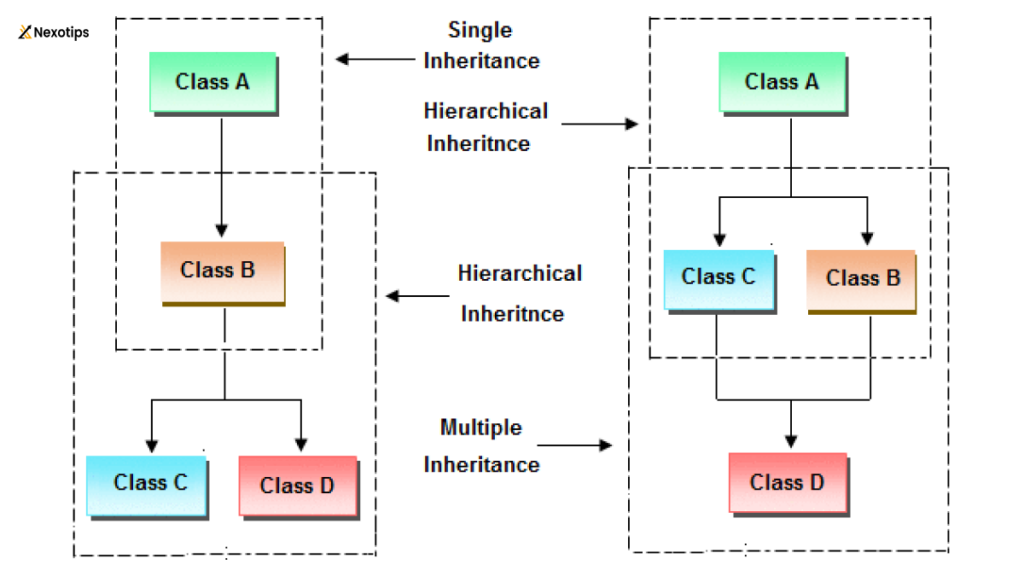
What is C++ Encapsulation and Inheritance : A Comprehensive Guide
Table of Contents
C++ Encapsulation and Inheritance has significantly influenced the development of modern software. One of the key features that make C++ stand out is its support for Object-Oriented Programming (OOP). Encapsulation and inheritance are two core principles of Object-Oriented Programming (OOP). These concepts not only help in organizing code more efficiently but also in creating more robust and maintainable software. This blog will delve into the details of encapsulation and inheritance in C++, exploring their definitions, benefits, and practical applications, along with code examples to illustrate these concepts.
Encapsulation in C++
Definition and Purpose
Encapsulation involves grouping data and methods into a class, which limits direct access to certain components of an object in order to prevent unintended interference and misuse of the data. In other words, encapsulation helps in protecting the integrity of the data within an object.
The main purposes of encapsulation are:
- Data Hiding: It hides the internal state of the object from the outside world and only exposes a controlled interface.
- Modularity: It allows a class to be modified without affecting other parts of the program.
- Maintainability: By providing a clear structure, encapsulation makes the code easier to manage and maintain.
Implementing Encapsulation
In C++, encapsulation is implemented using classes. A class in C++ is a blueprint for objects. It can contain private, protected, and public members.
- Private Members: These members can only be accessed within the class itself. They are not accessible from outside the class.
- Protected Members: These members can be accessed within the class and by derived classes.
- Public Members: These members can be accessed from outside the class.
Here’s a basic example to illustrate encapsulation in C++:
#include <iostream>
using namespace std;
class Employee {
private:
int id;
string name;
double salary;
public:
// Setter methods
void setId(int empId) {
id = empId;
}
void setName(string empName) {
name = empName;
}
void setSalary(double empSalary) {
if(empSalary >= 0) {
salary = empSalary;
}
}
// Getter methods
int getId() {
return id;
}
string getName() {
return name;
}
double getSalary() {
return salary;
}
// Display method
void display() {
cout << "ID: " << id << ", Name: " << name << ", Salary: " << salary << endl;
}
};
int main() {
Employee emp;
emp.setId(101);
emp.setName("John Doe");
emp.setSalary(50000);
emp.display();
return 0;
}
Benefits of Encapsulation
Encapsulation offers several benefits:
- Data Control : Data Control: The class manages the access and modification of the data.
- Code Flexibility and Maintenance: By changing the implementation of the methods, we can modify the internal workings of the class without changing the external code that uses the class.
- Improved Security: It aids in safeguarding data from unintended or unauthorized access.

Inheritance in C++
Definition and Purpose
In OOP, inheritance is a key principle that enables a class to acquire properties and methods from another class. The class that inherits is called the derived or child class, and the class from which it inherits is called the base or parent class.
The main purposes of inheritance are:
- Code Reusability: It allows for the reuse of existing code, which leads to reduced redundancy.
- Hierarchical Classification: It helps in creating a hierarchical classification of classes.
- Extensibility: It allows new functionality to be added to existing classes without modifying them.
Types of Inheritance
C++ supports several types of inheritance:
- Single Inheritance: Single Inheritance involves a derived class inheriting from a single base class, while Multiple Inheritance involves a derived class inheriting from multiple base classes.
- Multiple Inheritance: A derived class can inherit from multiple base classes, a concept known as multiple inheritance.
- Multilevel Inheritance: A class is derived from another derived class.
- Hierarchical Inheritance: Hierarchical Inheritance involves multiple derived classes inheriting from a single base class, while Hybrid Inheritance is a combination of two or more types of inheritance.
- Hybrid Inheritance: Hybrid Inheritance refers to the merging of two or more types of inheritance.
Implementing Inheritance
Here’s an example of single inheritance in C++:
#include <iostream>
using namespace std;
class Person {
protected:
string name;
int age;
public:
void setName(string personName) {
name = personName;
}
void setAge(int personAge) {
age = personAge;
}
void display() {
cout << "Name: " << name << ", Age: " << age << endl;
}
};
class Employee : public Person {
private:
double salary;
public:
void setSalary(double empSalary) {
salary = empSalary;
}
void display() {
Person::display();
cout << "Salary: " << salary << endl;
}
};
int main() {
Employee emp;
emp.setName("Jane Doe");
emp.setAge(30);
emp.setSalary(70000);
emp.display();
return 0;
}
Benefits of Inheritance
Inheritance offers several benefits:
- Reusability: It promotes the reuse of existing code, which reduces redundancy and increases efficiency.
- Extensibility: It allows for the extension of existing classes with new functionality without modifying the original class.
- Maintainability: It simplifies code maintenance by organizing related classes into a hierarchical structure.
Combining Encapsulation and Inheritance
Encapsulation and inheritance often work together to create well-structured and efficient code. By merging these two principles, a strong class hierarchy can be developed with clearly defined interfaces and concealed implementation specifics.
Example
Explore a more intricate scenario in which encapsulation and inheritance are merged together.
#include <iostream>
using namespace std;
// Base class
class Person {
private:
string name;
int age;
public:
void setName(string personName) {
name = personName;
}
void setAge(int personAge) {
age = personAge;
}
string getName() {
return name;
}
int getAge() {
return age;
}
void display() {
cout << "Name: " << name << ", Age: " << age << endl;
}
};
// Derived class
class Employee : public Person {
private:
double salary;
public:
void setSalary(double empSalary) {
salary = empSalary;
}
double getSalary() {
return salary;
}
void display() {
Person::display();
cout << "Salary: " << salary << endl;
}
};
// Another derived class
class Manager : public Employee {
private:
int teamSize;
public:
void setTeamSize(int size) {
teamSize = size;
}
int getTeamSize() {
return teamSize;
}
void display() {
Employee::display();
cout << "Team Size: " << teamSize << endl;
}
};
int main() {
Manager mgr;
mgr.setName("Alice Smith");
mgr.setAge(40);
mgr.setSalary(90000);
mgr.setTeamSize(10);
mgr.display();
return 0;
}
The Manager class is derived from the Employee class in this scenario, which is then derived from the Person class. Each class encapsulates its data and provides methods to access and modify that data.
Advanced Topics in Encapsulation and Inheritance
Access Specifiers
C++ provides three access specifiers: public, protected, and private. These specifiers determine the accessibility of the class members.
- Public : Public members can be accessed by any external class or function
- Protected: Members declared as
protectedare accessible within the class and by derived classes. - Private : Private members can only be accessed from within the class.
Constructors and Destructors
Constructors and destructors are essential components in managing the lifecycle of an object. A constructor is a unique member function that is invoked during the instantiation of an object. A destructor is invoked upon the object’s destruction.
Virtual Functions and Polymorphism
Polymorphism allows functions to behave differently based on the object that is invoking them. This is achieved through virtual functions. When a base class declares a function as virtual, a derived class can override it.
Here’s an example of polymorphism using virtual functions:
#include <iostream>
using namespace std;
class Base {
public:
virtual void show() {
cout << "Base class show() method" << endl;
}
};
class Derived : public Base {
public:
void show() override {
cout << "Derived class show() method" << endl;
}
};
int main() {
Base* b;
Derived d;
b = &d;
b->show(); // Calls Derived class's show() method
return 0;
}
Abstract Classes and Pure Virtual Functions
An abstract class is a class that is designed to be used as a base class and cannot be instantiated directly. An abstract class is defined using pure virtual functions. A pure virtual function is a function that lacks implementation in the base class.
#include <iostream>
using namespace std;
class Shape {
public:
virtual void draw() = 0; // Pure virtual function
};
class Circle : public Shape {
public:
void draw() override {
cout << "Drawing Circle" << endl;
}
};
class Rectangle : public Shape {
public:
void draw() override {
cout << "Drawing Rectangle" << endl;
}
};
int main() {
Shape* s1 = new Circle();
Shape* s2 = new Rectangle();
s1->draw();
s2->draw();
delete s1;
delete s2;
return 0;
}

Best Practices for Encapsulation and Inheritance
- Use Access Specifiers Wisely: Use
privatefor data members to ensure encapsulation. Usepublicfor methods that need to be accessed from outside the class. - Minimize Inheritance: Inheritance should be used only when there is a clear hierarchical relationship between classes. Prefer composition over inheritance if possible.
- Use Virtual Destructors: When using inheritance, ensure base class destructors are virtual to allow proper cleanup of derived class objects.
- Avoid Multiple Inheritance: Multiple inheritance can lead to complexity and ambiguity. Employ interfaces or abstract classes to accomplish comparable functionality.
- Follow the SOLID Principles: Adhere to the SOLID principles of object-oriented design to create robust, maintainable, and scalable software.
In conclusion, Encapsulation and inheritance are foundational concepts in C++ that enable the creation of well-structured, maintainable, and reusable code. Encapsulation helps in protecting data and providing a clear interface for interacting with objects. Inheritance allows for the reuse of existing code and the extension of functionality.
By understanding and applying these concepts, developers can write more efficient and robust software. The combination of encapsulation and inheritance leads to better organization of code, improved maintainability, and the ability to build complex systems with ease.
As you continue to explore C++, keep practicing these principles and integrating them into your projects. The power of C++ lies in its ability to model real-world problems effectively, and mastering encapsulation and inheritance is a significant step towards becoming a proficient C++ programmer.
Join our team at Nexotips, a well-known IT company that provides programming education and focuses on web development. We have been training future developers in HTML, CSS, JavaScript, C++, and Angular for the past five years. Our goal is to provide students the tools they need to become competent in these vital technologies and succeed in the world of technology.
